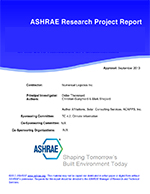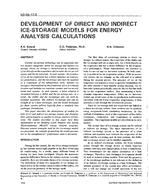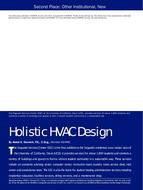Click here to purchase
Preserving thermal comfort in indoor environments is a key factor for occupants’ productivity and well-being. Introducing personalized thermal comfort has proven to be highly effective in promoting energy efficiency in built environments. Previous researchers in this field have suggested personalized thermal comfort evaluation based on occupants’ feedback as well as physiological and environmental measurements to adjust the operational settings of personalized cooling systems in buildings. During moderate climate, naturally ventilated office spaces can be assisted by personalized ventilation systems instead of resorting to the more energy intensive mechanical cooling and ventilation. In this study, an automated personalized ventilation (PV) system in the presence of natural ventilation is controlled, without human intervention, based on the estimated comfort of the occupant. The effectiveness of this system is evaluated based on its performance in three steady state ambient conditions representing moderate, warm and hot climates. To understand the thermal state of the occupant, segmental skin temperatures at typical summer space conditions are reported and inputted to Zhang model that gives the thermal sensation (TS) and the thermal comfort (TC) levels. To obtain these skin temperatures needed for comfort estimation, a previously validated multi-segmented bioheat model for the human body is adopted that can be also reported via infrared thermography technology.
Citation: 4th Intl Conf: Efficient Bldg Design
Product Details
- Published:
- 2020
- Number of Pages:
- 10
- Units of Measure:
- Dual
- File Size:
- 1 file , 2 MB
- Product Code(s):
- D-ICEB20-05


